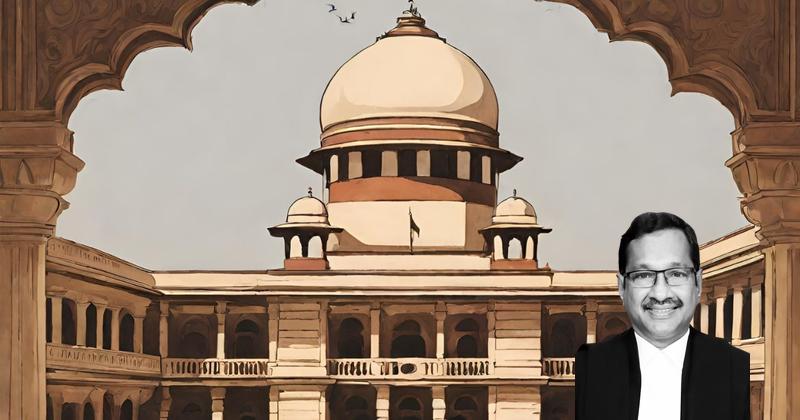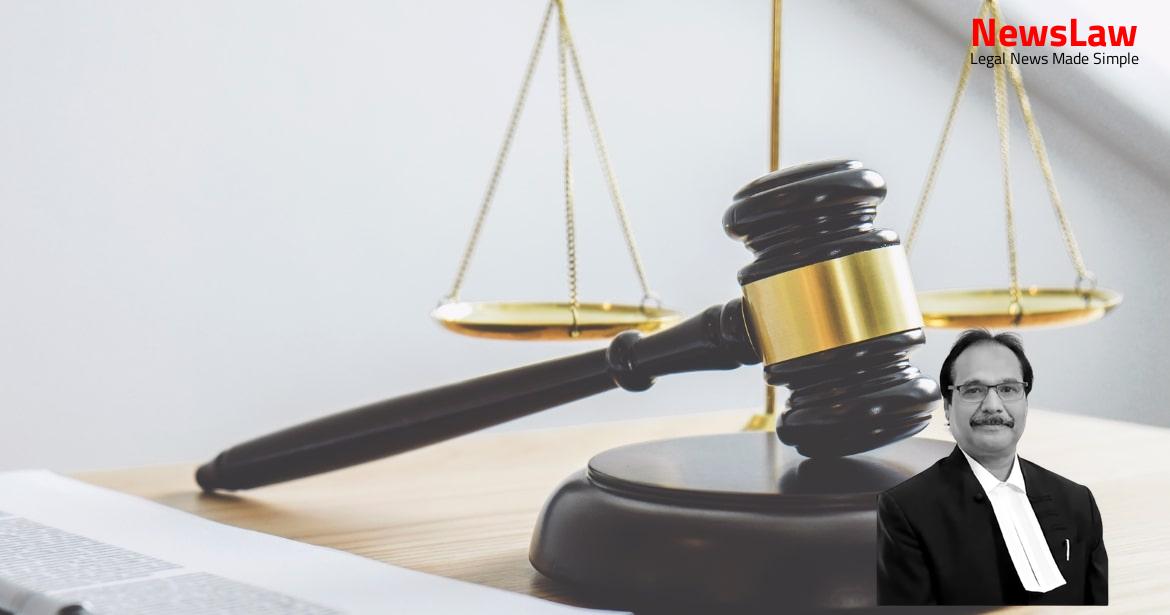Dive into the realm of legal scrutiny as courts examine the nuances of circumstantial evidence in criminal convictions. The analysis focuses on the burden of proof and the principles governing convictions based on indirect evidence. Discover how the courts navigate through witness testimonies and forensic reports to arrive at a verdict. Join the discussion on the meticulous legal reasoning that underpins criminal trials and justice delivery.
Facts
- Trial completed, finding of guilt recorded for accused Rahul and Ramesh under Section 302 read with Section 34, IPC.
- Appellant Rahul found guilty under Section 25 of the Arms Act.
- Sentenced to undergo life imprisonment and pay a fine of Rs.20,000 each.
- Fined Rs.5,000 and sentenced to rigorous imprisonment for two years under the Arms Act for appellant Rahul.
- Both sentences to run concurrently.
- High Court of Punjab & Haryana confirmed the conviction and sentence for Section 302 read with Section 34, IPC and Section 25(1B)(a) of the Arms Act.
- Appeal partly allowed by acquitting Ramesh due to lack of proof beyond reasonable doubt.
- Appellant and Ramesh approached the High Court through Criminal Appeal No.D-1060 of 2012.
- Accused pleaded not guilty and claimed trial.
- The dead body was suspected to have been brought in a vehicle by unknown persons and murdered with firearm injuries.
- 20 witnesses were examined by the prosecution to prove the charges against the appellant and another accused.
- A crime was registered under FIR No.297 for the offence punishable under Section 302 read with Section 34, IPC and Section 25 of the Arms Act.
- The appellant was arrested on 21.08.2010 and certain items were taken into possession as evidence.
- The deceased was identified through a published news item along with a photograph.
- Evidence of firearm shots and other injuries on the deceased’s body were noticed by the police.
- The prosecution alleged that the accused collectively took the deceased to a hill, fired upon him, and threw him in a pit.
- Disclosure statements were made by the accused during the investigation, revealing aspects of the crime.
- The case was committed to the Court of Sessions after a final report was filed against the accused.
Also Read: Analysis of Seniority Determination in Armed Forces Personnel Case
Arguments
- The appellant’s counsel argued that suspicion cannot substitute proof and urged the courts to exercise caution when convicting based on circumstantial evidence.
- Disputed the alleged recovery of a pistol and cartridges at the behest of the appellant, claiming it was false and lacked independent witnesses for corroboration.
- Stressed that the appellant has been wrongly implicated and has served 11 years in incarceration, requesting acquittal.
- Cited the case of State of Goa v. Sanjay Thakran & Anr. as precedent, emphasizing the tests for evaluating circumstantial evidence which were not met by the prosecution in this case.
- Highlighted the bias of interested witnesses (PW-3 and PW-12) who are the deceased’s brother and mother, and argued that the conviction based on their testimony in a blind murder case lacks sufficient evidence.
- The argument presented by the respondent focuses on the ‘circumstance of last seen together’ not being sufficient by itself to establish the guilt of the accused.
- Reliance is placed on the judgments in the cases of Kanhaiya Lal v. State of Rajasthan and Wakkar & Anr. v. State of Uttar Pradesh to support the contention that more evidence is required to connect the accused to the crime.
- The forensic report is cited as supporting the prosecution’s case, showing that the weapon recovered from the appellant’s relative’s residence was used in the crime.
- Various witnesses’ statements, including those of PW-3 and PW-12, were examined to establish the appellant’s guilt.
- The motive, involving the deceased’s relationship with the appellant’s wife, is also presented as established.
- The overall evidence, corroborated by oral and documentary evidence, points to the appellant as the sole perpetrator.
- The respondent argues that the testimony of close relatives of the deceased should not be discarded if corroborated with other evidence.
- It is asserted that the prosecution has successfully established the chain of events through evidence and recoveries, leading to the conclusion of the appellant’s guilt.
- The trial court and the High Court have extensively considered the evidence, with no grounds for interference in the appellant’s case as per the concurrent findings.
- While the co-accused Ramesh was acquitted by the High Court due to lack of proof beyond reasonable doubt, the conviction of the appellant based on circumstantial evidence is under scrutiny.
Also Read: Interstate Prisoner Transfer: Court’s Legal Analysis
Analysis
- The prosecution has proven the guilt of the accused beyond reasonable doubt.
- The wounds on the deceased were caused by a fire-arm, with the bullet found embedded in the body.
- Testimonies of witnesses like PW-7 and PW-8 along with other evidence solidify the case against the accused.
- Various injuries and details of the crime scene have been vividly described by witnesses and examined experts.
- The recovery of the weapon at the accused’s Bua’s house further strengthens the case.
- Contradictions and hostilities in witness testimonies have been acknowledged but do not dismiss the overall evidence.
- The motive for the crime has been substantiated through the evidence presented.
- The High Court’s meticulous examination of the evidence led to the conviction of the accused.
- A chain of evidence has been established, pointing conclusively to the accused’s involvement in the crime.
- Various pieces of evidence, including call details and the recovery of the murder weapon, align to inculpate the accused.
- Relatives should not be treated as untruthful witnesses according to the law
- Interested testimony can be reliable and sufficient for conviction if found to be inherently probable
- Close relatives who are natural witnesses are not considered as interested witnesses
- Evidence of interested persons can be considered if corroborated by other evidence on record
- Interested evidence should be scrutinized carefully and accepted with caution, without requiring absolute corroboration
- The High Court reasoning and evidence justify acquitting the other appellant, Ramesh, but confirming the conviction of the appellant
- The appeal lacks merit and is therefore dismissed
- The appellant has served over 11 years of the sentence, and can apply for remission after completing 14 years of sentence
Also Read: Judicial Analysis on Conversation Authenticity and Enquiry Need
Decision
- If representation is made, it must be sent to the Government for consideration
- The Government will consider the representation in accordance with state policy
Case Title: RAHUL Vs. THE STATE OF HARYANA (2021 INSC 145)
Case Number: Crl.A. No.-000262-000262 / 2021



